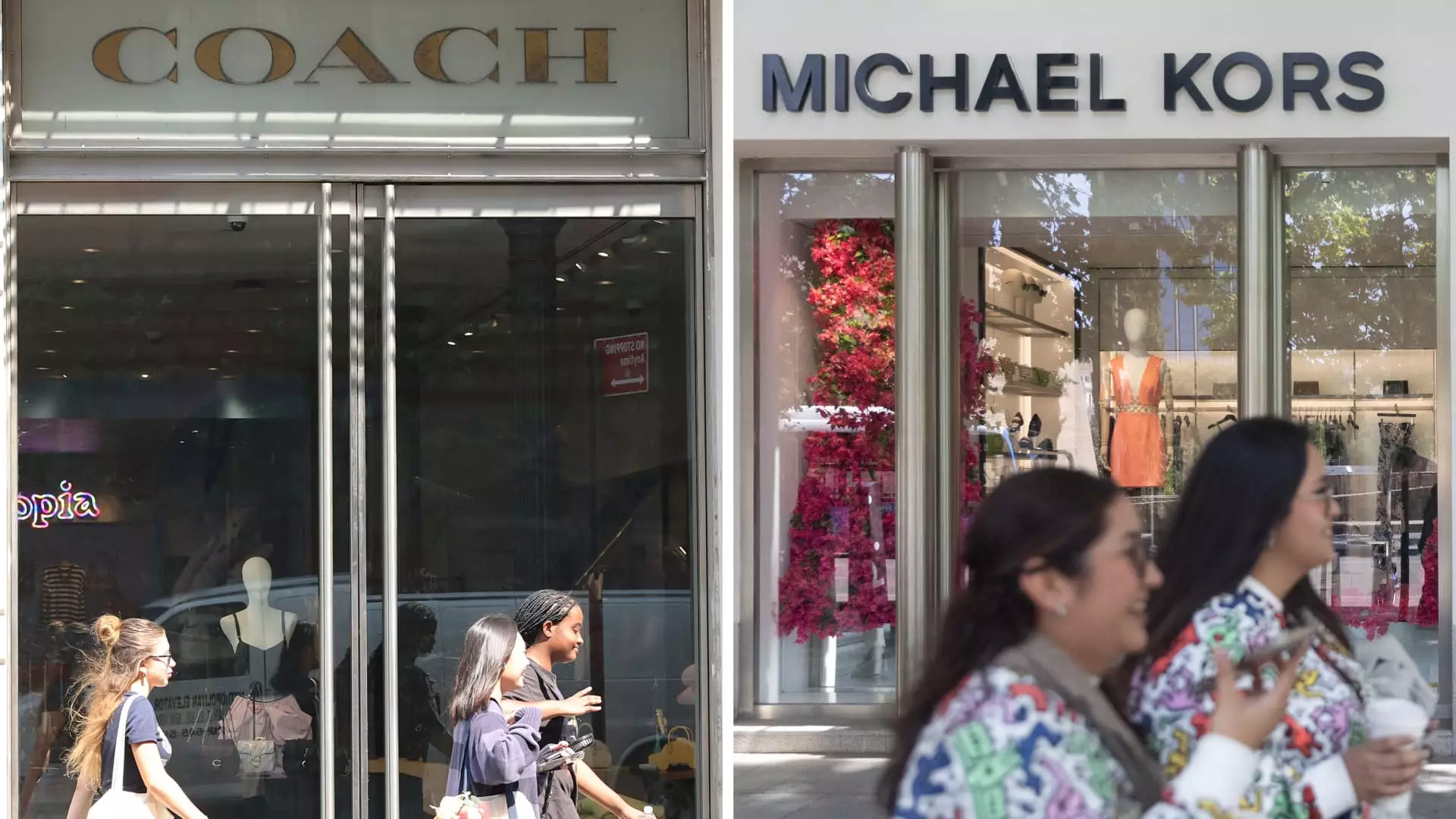In a notable development within the luxury fashion sector, a federal judge has issued a ruling that halts Tapestry’s proposed $8.5 billion acquisition of Capri Holdings. This decision, stemming from a brief trial conducted in New York, was a response to a motion filed by the Federal Trade Commission (FTC) seeking a preliminary injunction to stop the merger. The implications of this ruling extend beyond mere financial losses for the companies involved; it raises crucial questions about competition, consumer choice, and the future of the luxury fashion market.
The proposed merger was seen as a strategic move that could consolidate America’s largest luxury brands under one umbrella. Tapestry, the parent company behind Coach, Kate Spade, and Stuart Weitzman, sought to combine forces with Capri, which owns Versace, Jimmy Choo, and Michael Kors. However, the immediate market reaction was telling. Following the judge’s ruling, Tapestry’s stock rose by approximately 10%, while Capri’s shares plummeted by around 50%. This sharp contrast indicates the financial ramifications of the ruling and the stark differences in investor confidence regarding the two companies’ futures.
Tapestry’s response to the ruling was predictably defiant. The company has expressed its intent to appeal the decision, arguing that the merger would enhance competition rather than diminish it. According to Tapestry, the luxury fashion industry is marked by intense rivalry and an influx of new entrants that continually reshape the market landscape. Their position hinges on the belief that merging with Capri would allow for a more agile response to trends, better products for consumers, and a broader customer reach.
The FTC’s Stance on Competition
The FTC’s intervention in this case is emblematic of a broader governmental emphasis on maintaining robust competition across various industries. By opposing this merger, the FTC argues that the consolidation could harm consumers in multiple ways, particularly by reducing accessibility to affordable handbags and diminishing workers’ salaries and benefits in a competitive labor market. Henry Liu, the director of the FTC’s Bureau of Competition, stated that the ruling represents a victory for consumers seeking affordable luxury options, and it ensures continued rivalry between Tapestry and Capri to the benefit of the American public.
The FTC’s case was bolstered by research and testimony suggesting that the merger could lead to price increases for handbags, accessories, and apparel. In a segment of the economy where consumers are already facing heightened price sensitivity due to prolonged inflation, the Commission’s efforts aim to prevent further financial strain. Tapestry and Capri countered these claims by arguing that they do not directly compete with each other and that the market today offers a plethora of alternatives, especially in the rapidly evolving handbag space influenced by platforms like TikTok.
Regulatory Trends and Political Pressures
The ruling reflects not only economic realities but also political pressures acting on regulatory bodies. With the current administration prioritizing consumer protection and competition preservation, the decision aligns with a larger trend identified during Lina Khan’s tenure as FTC chair. The agency has taken aggressive stances against mergers in various sectors, including technology and grocery, and the fashion industry is no exception.
Political rhetoric surrounding economic issues, such as those stemming from inflation, has also intensified scrutiny over corporate mergers. Prominent figures like Vice President Kamala Harris have underscored the importance of maintaining competitive markets for consumer welfare. On the opposite side of the aisle, candidates like Donald Trump have spotlighted inflation and proposed tariffs as measures to protect American consumers. As such, the Tapestry-Capri situation has unwittingly become part of a larger national dialogue about economic equity and consumer rights.
As Tapestry prepares to challenge the ruling, the implications of this case extend well beyond the immediate parties involved. If the merger were to proceed following the appeal, it could pave the way for similar consolidations within the fashion sector, potentially altering the competitive landscape significantly. On the flip side, if the FTC’s opposition is upheld, it could serve as a reinforced precedent for future merger examinations in not only the luxury fashion industry but across various markets.
The case emphasizes the delicate balance between business ambitions and regulatory oversight in an evolving market. As consumers continue to navigate an industry rife with choices, the outcomes will likely resonate across fashion’s tiered economic landscape, influencing everything from pricing strategies to product quality.
The Tapestry-Capri ruling serves as a critical juncture in evaluating how regulatory frameworks engage with the realities of corporate consolidation, consumer expectations, and the enduring dynamism of the fashion industry. The dialogue around this ruling sheds light on the complex interplay between competition, consumer rights, and market evolution in an era of increased economic vigilance.

Leave a Reply